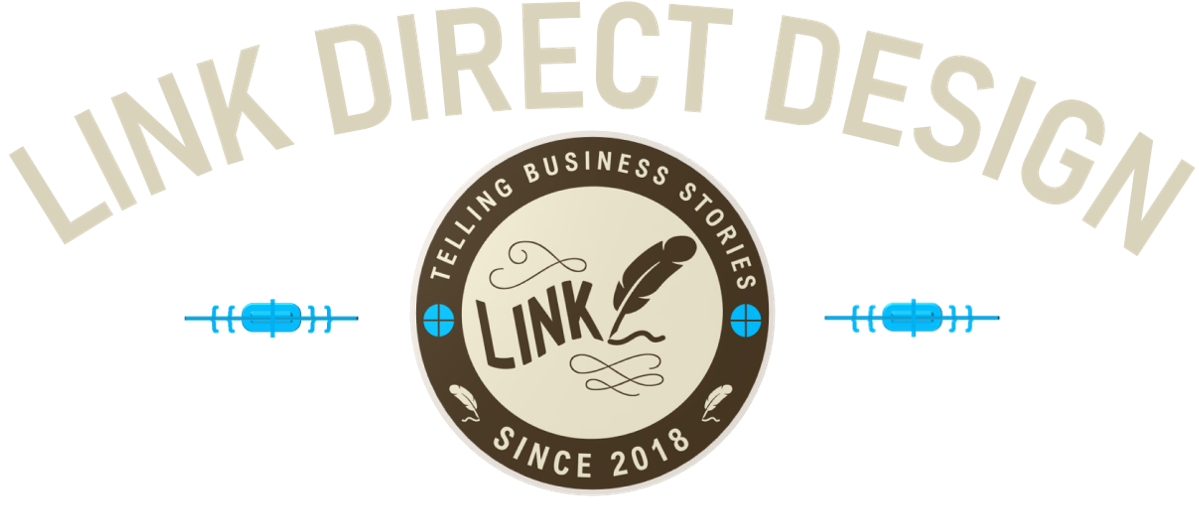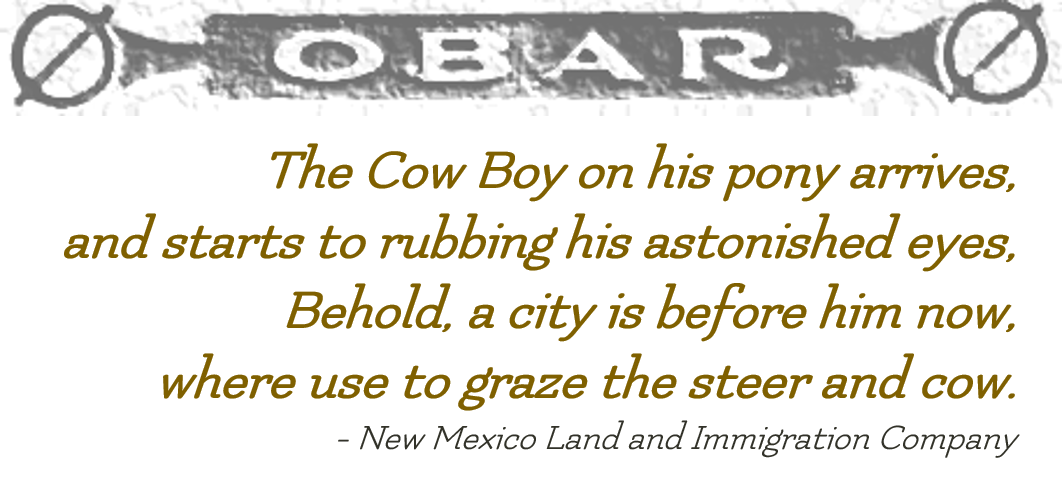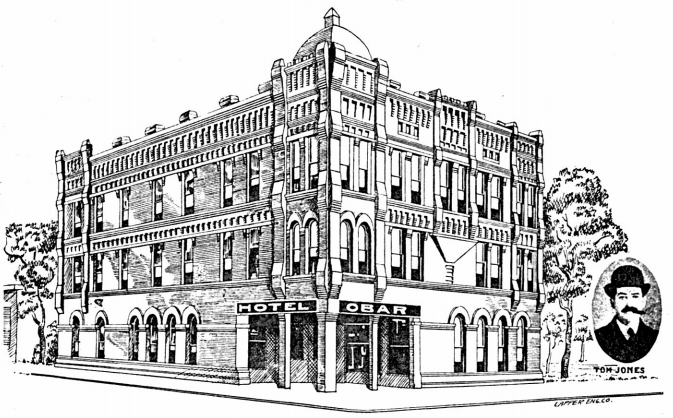NEW MEXICO LAND AND IMMIGRATION COMPANY
New Mexico Chapter 1
INTRO EUROPE GERMANY OHIO INDIANA SOUTH DAKOTA NEW MEXICO KANSAS DEEPER LOOKS BOOK
A planned community surrounded by the farms of successful homesteaders
That was the theory behind the creation of Obar.
“A true reflection of the character of the homesteaders at Obar.”
Investors from Kansas took the just-existing town of Perry, about two years old, and moved it to the southern side of the railroad tracks in 1908. They renamed it after a local ranch known by its brand as “Circle Bar,” which became Obar. The concept appeared straight-forward, and foolproof. The lots and stores in town would feed off the homesteading outside town, increasing in value as more homesteaders began to farm. The homesteaders would benefit from an instant business hub, amenities of a city and railroad connections for travel and transporting their goods. Not least among promises was the crossing of an additional line, something sure to skyrocket the value and importance of Obar.
The Topeka, KS, investors had placed $50,000 into play with the stated objective to build many of the amenities needed by settlers in a town they named Obar after the Circle Bar Ranch in the area. They provided a town design, and their investors would buy a lot within the town and launch the businesses needed to build an economy on the southern high plains. Or, their marketing materials would attract homesteaders to encircle the town with farms providing the needed fuel for a local economy.
“Towns do not grow by accident.”
Their company, The New Mexico Land and Immigration Company platted a town and produced slick, embossed, thick-stock booklets showing their progress as buyers began to filter into Quay County (pronounced locally as “kway.”) to take them up on their proposal. L.L. Klinefelter, editor of the Obar Progress newspaper, later came to use “Imagination” substituting for Immigration in the company’s title. It was not a compliment.
The pitch was hard-sell, and not unlike those one might recognize used today to sell time-share condominiums along an East Coast beach, or pushing building lots along a lakeside development in the Ozark Mountains.
... there is still room at the top; but you cannot expect to reach there if you are content to pull and jostle and argue and wrangle at the bottom. You must get a move on, grit your teeth, and in the face of all opposition and criticism, say:
‘I will make a start today, and buy a lot in Obar.’
“Remember that you cannot be carried to success in a doubtful vehicle, with the hinges poorly oiled, the backs and seats unpadded; but when you are in a vehicle prepared such as is the Obar proposition, then you have all the latest improvements, insuring ease, comfort and success.
“Imagine your position in life at 50, if you continue to procrastinate, and wait for opportunities to pick you up instead of your picking up the opportunities. You must either be a loafer on your friends and relations, or marry an heiress, and the heiress who will take you then will be as wanting in good sense as you are in business judgment, providing you let Obar slip away from you.”
Obar Hotel plan touted in the New Mexico Land and Immigration Company prospectus. Unfortunately, it was never built.
Charles Ulysses Link soon made several trips to Obar, already under development
After returning from his final exploration, he shared with Clara that he thought the New Mexico Land and Immigration Company was being forthright and that their plan was sure to succeed. From all he had seen, he believed that true opportunity existed for those willing to work hard, and he and his family would get in on the ground level. And, he knew from traveling to California, that the last of the homesteading opportunities were drawing quickly to their conclusion. The time to move, he felt, was now.
They were both eager for the chance to get away from blizzards and other storms in South Dakota. But even more than that, the call to improve themselves before all the land and opportunities were consumed by others, seems to have been a driving factor their thoughts. At least for Charles, there seems to have aslo been a bit of wanderlust. It was a common affliction in that time period. What was over the horizon just might make one rich, or at least add to freedoms and offer a fresh start. The failure in Indiana, where the Links arrived significantly after the first farms were developed, and needing to buy a smaller farm in the area, may have increased that desire to find the perfect deal on the frontier of new development.
When time came, the decision was finalized, the land in New Mexico selected and registration for homesteading completed.
It was not hard to come up with a buyer for the improved land near Mt. Vernon, SD, with new house, barn, cultivated and cleared fields and other outbuildings. C.U. and Clara sold 160 acres of rich South Dakota farmland for a profit of $19 an acre. Then they moved Forest, Edna, Oscar, Eldon and Mary - beginning at noon on May 8, 1908 - to the flat lands of eastern New Mexico where they soon joined some of the earliest Obar homesteaders and townspeople.
The Chicago, Rock Island and El Paso Railway rolling stock pulling into Obar New Mexico’s depot from the east.
Ghost town expert, Art Pike, describes Obar:
“Obar, originally named Perry, was formed in 1906. Citizens changed its name to Obar in 1908 as it was moved from the north side to the south side of the Chicago, Rock Island and Pacific Railway (also the Chicago, Rock Island and El Paso). Obar reflects the Circle Bar Ranch in the area which had a circle with a bar under it as its brand.
“Some of the last homesteading land in the West was available on the New Mexico plains. Nara Visa, eight miles to the northeast, and Hadley also attracted homesteaders. Obar was advertised as the ‘Coming City of the Famous Circle Bar Country ... KEEP YOUR EYE ON OBAR!’ "






